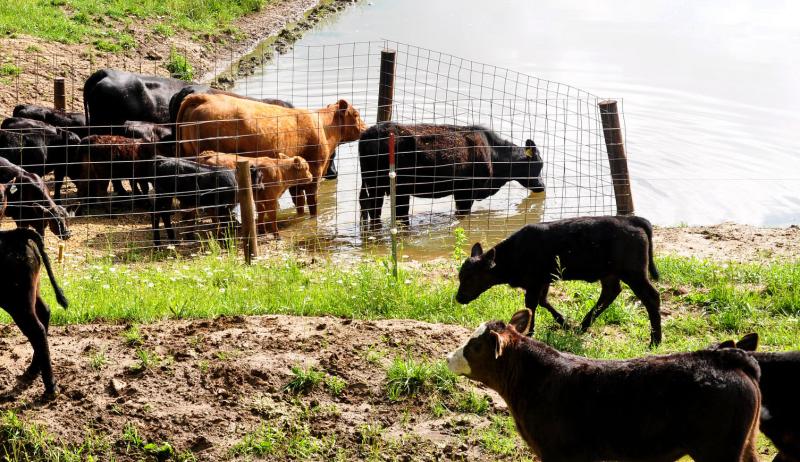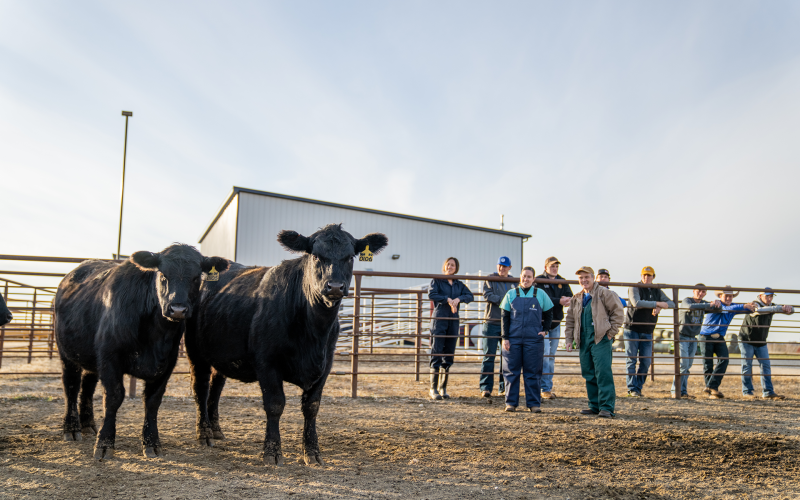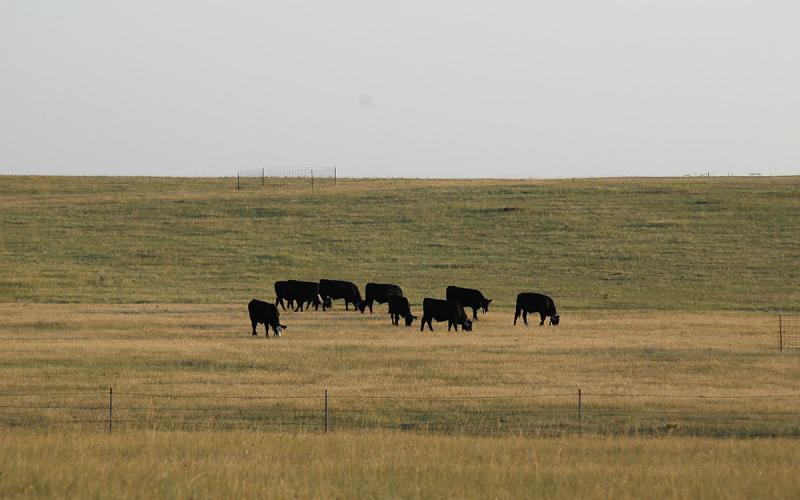Originally written by Adele Harty, former SDSU Extension Cow/Calf Field Specialist; and Ken Olson, former Professor & SDSU Extension Beef Specialist. Updated by Erin DeHaan.

Weaning is the most stressful time in a calf’s life. This stress is a result of a culmination of factors. These factors could include the weaning event itself, transportation following weaning, handling and processing, new types of waterers, new feed ingredients, and variety of environmental stressors from dust to extreme temperatures. The number and degree to which these factors are experienced by the calf could exacerbate the stress experienced during the weaning event. This stress can depress the immune system, leading to greater risk of sickness and death. Any opportunity to reduce the stress of weaning can contribute to improved health and performance of calves, both during and after the weaning period.
Why Low-Stress Weaning?
A common practice for weaning includes the abrupt removal of the calf from the cow, which can create a highly stressful situation. There have been efforts to reduce this stress by incorporating low-stress weaning methods. These are termed as such, because they aim to make the separation more gradual to reduce stress and therefore, potentially improve health and performance of the calf.
Low-stress weaning divides the weaning event into two steps:
- Nutritional Separation: Removes the nutritional supply of milk from the calves.
- Physical Separation: Remove calf from the dam ≥ 3 days following nutritional separation.
Examples of low-stress weaning methods include fenceline and two-step weaning using anti-suckling devices.
Fenceline Weaning
Fenceline weaning includes separating calves from their damn via adjacent pens or paddocks. This initial separation (nutritional separation) requires approximately 3 to 7 days to be effective. Research in Utah indicated that fenceline weaned calves vocalized less, spent more time eating, and had greater weight gains compared to calves that were abruptly and completely separated from their dams. The increased weight gain was maintained through a 10-week timeframe post-weaning. Research conducted at SDSU indicated that fenceline weaned calves gained similarly to calves that weren’t separated from their dams during the time of nutritional separation, and maintained weight during the first 7 days following physical separation compared to abruptly weaned calves which lost ~2.4 lb per day. Additional work at Michigan supported the increased performance for the first 14 days and lower serum haptoglobin levels at day 5, however this performance did not continue through the study and there were no sustained performance differences based on weaning method. Haptoglobin is an indicator of stress and is often present in the blood following stress. Thus, lower serum haptoglobin in fenceline weaned calves indicated they were less stressed after weaning. An additional study in Michigan evaluated calf behavior and found that the fenceline and two-step weaning methods appear to be less stressful on calves compared to abrupt weaning methods.
Steps to Take
For fenceline weaning to be effective, please consider the following steps:
- Prior to weaning, place pairs in the pasture (or pen if dry lotting) that the calves will be in following weaning, so they become familiar with the fences and water location.
- At weaning, place the cows in the pasture adjacent to the calves so they can see, hear and smell each other, but cannot nurse.
- Ensure fences are secured so the cows and calves remain separated.
- Fence options:
- A 5-strand barbed wire fence or electric fence
- A barbed wire fence with a single offset electric wire to ensure calves cannot reach through and nurse
- Panels
- Other options can work, but separation must be maintained
- Calves can be gathered and moved after a few days when cows and calves move father from the dividing fence and are not concerned about each other.
Two-Step Weaning
The two-step process utilizes anti-suckling devices, or plastic nose tags, that prevent the calves from nursing while they are in the same pasture as their dams. The calves are still able to eat forage and drink water. Research from Canada shows that calves with nose tags do not bawl or walk any more than calves without nose tags and spend as much time eating compared to calves without nose tags. When stage 2 starts (separation from dams), there is no increase in bawling or walking compared to stage 1 or prior to inserting the nose tags. Meanwhile, contemporaries that were abruptly weaned in the Canadian studies displayed dramatic increases in bawling and walking during the weaning process. Work conducted at SDSU indicated that calves with nose tags gained almost 1.5 lb more per day compared to calves without nose tags but performed similarly to calves without nose tags during the first 7 days after weaning. Overall, research in Michigan indicated two-step weaning was less stressful than abrupt weaning.
Steps to Take
For two-step weaning to be effective, please consider the following steps:
- Place plastic nose tags in all calves for 4 to 7 days. It is important to ensure they are placed correctly to minimize loss through falling out and calves figuring out how to nurse with them in.
- After the 4 to 7-day period, remove the plastic nose tag, separate calves, and move the cows to a different location.
The Bottom Line
The lesser degree of stress that calves experience during the weaning event helps improve performance of calves. This early improvement can give calves an advantage, which can have long-term implications on feedlot performance and carcass characteristics.


